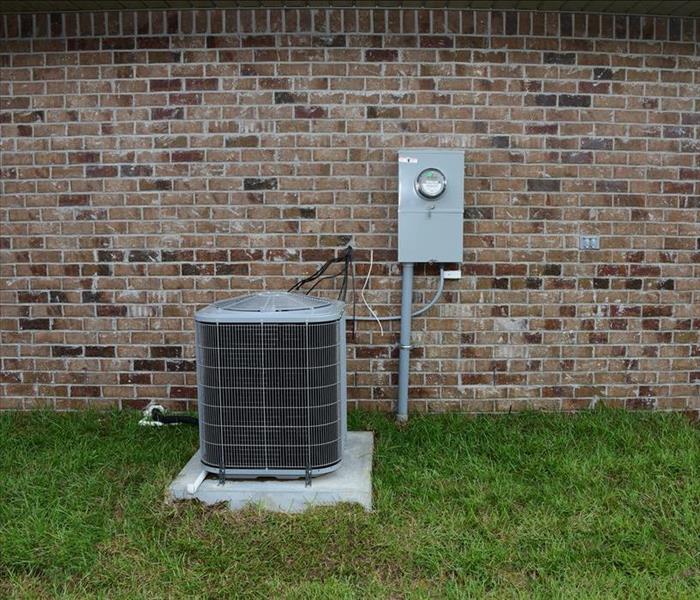Preventing Water Damage from AC Line Leaks in Your Dallas Home
3/1/2017 (Permalink)
SERVPRO Tips for Preventing Damage by Water and Condensation
Condensation from a leak in your air conditioner line can be creating damage to your home. Learning how to prevent this problem before it starts can prevent water damage and repairs. Water damage from an A/C condensation line leak is quite common. Uninsulated lines can also lead to extensive condensation resulting in a surplus of water in the utility closet or the attic.
The humidity here can be high, plus the dark space surrounding the lines encourages the growth of mold, making this type of water damage dangerous. As mold grows, it gets transferred through your HVAC system and spreads throughout the rest of your Dallas home. A water damage professional technician from SERVPRO needs to be called in at this point to clean up all the problems.
How can you prevent condensation line leaks from your A/C unit? The most important thing to do is regularly inspect it, as even a tiny sign of condensation is an indication you could have a problem. Below find four tips on maintaining your AC condensation line:
Inspect Regularly – As already stated, this is a critical step. Each time you change your HVAC air filter, about every thirty days to sixty days on average, inspect the AC condensation line visually for any moisture.
Make sure AC condensation line pitch is correct and lower elbow connect angles – Your AC condensation line should run as straight as possible, and a drop of 1/8 inches for each twelve inches of length is the minimum pitch. Get rid of any elbow connections that have a 90-degree angle and replace them with 45-degree elbow connections whenever possible. This is easy to accomplish with PVC materials.
Check the AC condensation line exit and opening – While your AC unit is running look at the condensation line opening to ensure water is visibly flowing from to drain. The amount of water you see depends on how high the humidity is in your home. Inspect the exit port for clogs from an algae buildup or debris. SERVPRO advises keeping anti-algae tablets in the drain pan of the air handler.
Clean the line ever three to six months – a simple way to clean an AC line is by using a nylon string and a bit of cotton rag. Using a shop vacuum, suck out the nylon string on the exit side, then tie a piece of cotton rag to the other end and pull it through. All the debris in the line is brought out the exit side. Do not make the piece massive, or it may become trapped within the drainage line. Make it small enough, so it fits loosely in the pipe.
Even with precautions taken, you may still encounter water damage from your AC unit. If this happens, SERVPRO of Southeast Dallas County is ready to help you fix the problem and restore any damage, including cleaning up mold. Just get in touch with us if you suspect or find a leak by dialing (972) 227-0800 and a technician will be sent out to your home promptly.






 24/7 Emergency Service
24/7 Emergency Service